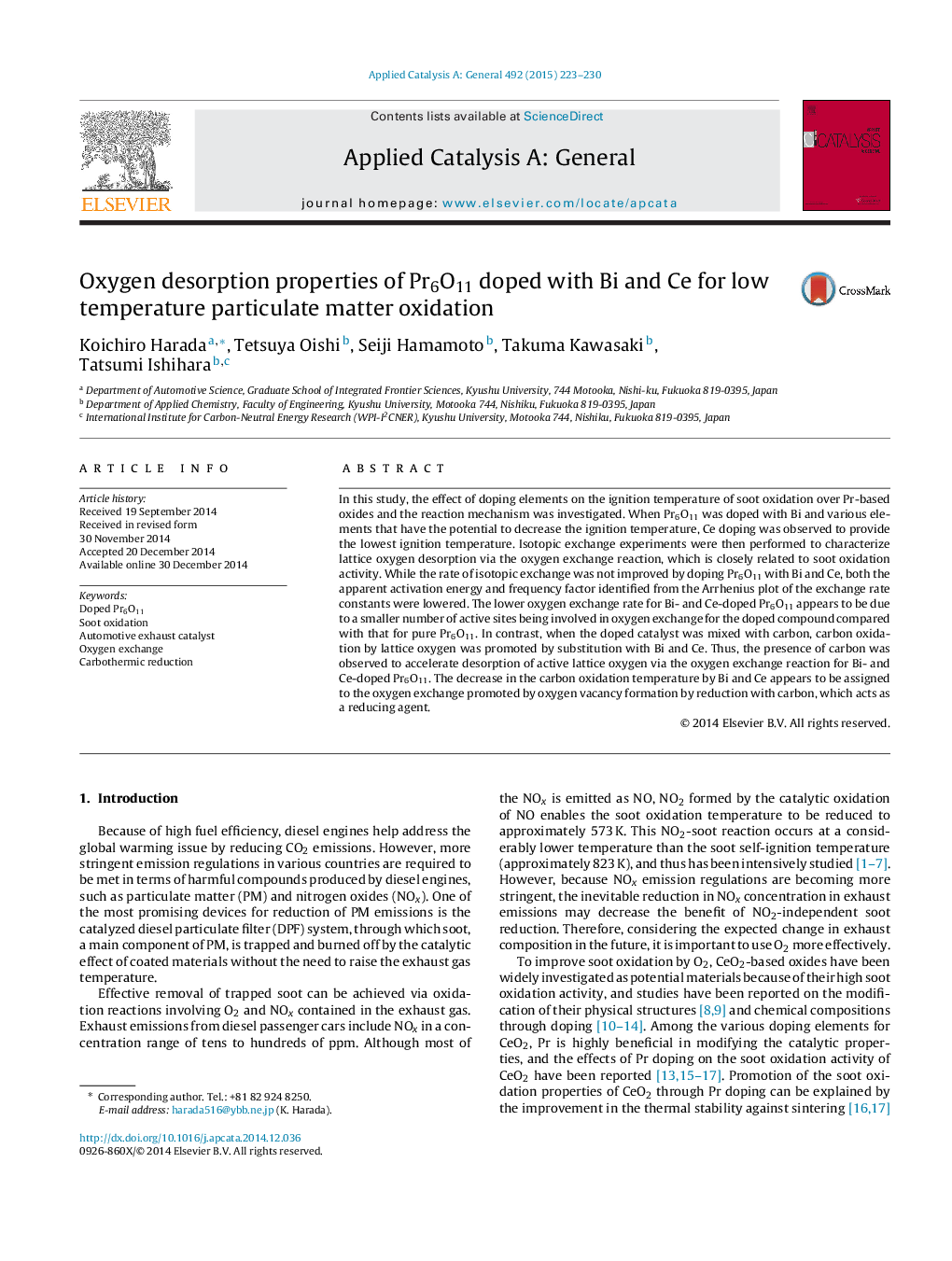| Article ID | Journal | Published Year | Pages | File Type |
|---|---|---|---|---|
| 39233 | Applied Catalysis A: General | 2015 | 8 Pages |
•Bi- and Ce-doped Pr6O11 provides high activity of low-temperature soot oxidation.•Surface CeO2 phase deposited on PrCeBiO potentially acts as an active site.•Bi and Ce doping decreases the apparent activation energy for oxygen exchange reaction.•Carbon introduces oxygen vacancy and active site for oxygen activation on PrCeBiO.
In this study, the effect of doping elements on the ignition temperature of soot oxidation over Pr-based oxides and the reaction mechanism was investigated. When Pr6O11 was doped with Bi and various elements that have the potential to decrease the ignition temperature, Ce doping was observed to provide the lowest ignition temperature. Isotopic exchange experiments were then performed to characterize lattice oxygen desorption via the oxygen exchange reaction, which is closely related to soot oxidation activity. While the rate of isotopic exchange was not improved by doping Pr6O11 with Bi and Ce, both the apparent activation energy and frequency factor identified from the Arrhenius plot of the exchange rate constants were lowered. The lower oxygen exchange rate for Bi- and Ce-doped Pr6O11 appears to be due to a smaller number of active sites being involved in oxygen exchange for the doped compound compared with that for pure Pr6O11. In contrast, when the doped catalyst was mixed with carbon, carbon oxidation by lattice oxygen was promoted by substitution with Bi and Ce. Thus, the presence of carbon was observed to accelerate desorption of active lattice oxygen via the oxygen exchange reaction for Bi- and Ce-doped Pr6O11. The decrease in the carbon oxidation temperature by Bi and Ce appears to be assigned to the oxygen exchange promoted by oxygen vacancy formation by reduction with carbon, which acts as a reducing agent.
Graphical abstractFigure optionsDownload full-size imageDownload high-quality image (124 K)Download as PowerPoint slide
